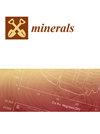Petrogenesis and Tectonic Evolution of I- and A-Type Granites of Mount Abu Kibash and Tulayah, Egypt: Evidence for Transition from Subduction to Post-Collision Magmatism
IF 2.2
4区 地球科学
Q2 GEOCHEMISTRY & GEOPHYSICS
引用次数: 0
Abstract
The Neoproterozoic granitic rocks of Mount Abu Kibash and Tulayah in the central Eastern Desert of Egypt are of geodynamic interest and provide us with important information about the evolution and growth of the northern part of the Arabian–Nubian Shield (ANS) continental crust. They are primarily composed of granodiorites and syenogranites based on new field, mineralogical, and geochemical analyses. The granodiorites are marked by an enrichment of LILEs such as Sr, K, Rb, Ba compared to HFSEs like Nb, Ta, Ti and show a higher concentration of LREEs relative to HREEs. This composition suggests a subduction-related setting and aligns with the characteristics of subducted I-type granites in the ANS. Chemistry of the analyzed primary amphiboles in the investigated granodiorites support a calc-alkaline nature, mixed source and subduction-related setting. The granodiorites represent an early magmatic phase in this setting, likely formed from a mix of mantle-derived mafic magmas and lower crust material, with subsequent fractional crystallization. On the other hand, syenogranites exhibit high SiO2 (72.02–74.02 wt%), total alkali (7.82–8.01 wt%), and Al2O3 (13.79–14.25 wt%) levels, suggesting their derivation from peraluminous (A/CNK > 1) parental magmas. Their REE-normalized patterns are flat with a pronounced negative Eu anomaly, typical of post-collisional A2-type granites worldwide. These rocks originated from the partial melting of a juvenile lower crustal source (tonalite) in a post-collisional setting, driven by lithospheric delamination that facilitated mantle upwelling and underplating to the lower crust. Interaction between the upwelled mantle and lower crust led to fertilization (enrichment with HFSE and alkalis) of the lithosphere before partial melting. Fractional crystallization coupled with less considerable crustal assimilation are the main magmatic processes during the evolution of these rocks. The transition from subduction to post-collisional setting was accompanied by crustal uplifting, thickening and extensional collapse of ANS continental crust that caused emplacement of large masses of A-type granites in the northern ANS.埃及 Abu Kibash 山和 Tulayah 的 I 型和 A 型花岗岩的成岩作用和构造演化:从俯冲过渡到碰撞后岩浆活动的证据
埃及东部沙漠中部阿布基巴什山和图拉耶山的新新生代花岗岩具有重要的地球动力学意义,为我们提供了有关阿拉伯-努比亚地盾(ANS)大陆地壳北部演化和增长的重要信息。根据新的实地、矿物学和地球化学分析,它们主要由花岗闪长岩和正长花岗岩组成。与 Nb、Ta、Ti 等 HFSEs 相比,花岗闪长岩的特征是富含 LILEs,如 Sr、K、Rb、Ba;与 HREEs 相比,花岗闪长岩显示出较高的 LREEs 浓度。这种成分显示了与俯冲有关的环境,并与 ANS 地区俯冲 I 型花岗岩的特征相吻合。调查花岗闪长岩中分析的原生闪长岩化学成分支持钙碱性、混合来源和俯冲相关环境。花岗闪长岩代表了这一环境中的早期岩浆阶段,很可能是由地幔衍生的岩浆和下地壳物质混合形成的,随后进行了分块结晶。另一方面,正长花岗岩表现出较高的二氧化硅(72.02-74.02 wt%)、总碱(7.82-8.01 wt%)和氧化铝(13.79-14.25 wt%)含量,表明它们来自过铝质(A/CNK > 1)母岩浆。它们的REE归一化形态平坦,具有明显的负Eu异常,是全球碰撞后A2型花岗岩的典型特征。这些岩石起源于碰撞后环境中幼年下地壳源(辉绿岩)的部分熔融,岩石圈的分层促进了地幔的上涌和下地壳的下沉。上涌的地幔和下地壳之间的相互作用导致岩石圈在部分熔化之前肥化(富含高频闪长岩和碱)。在这些岩石的演化过程中,主要的岩浆作用过程是碎裂结晶和不太明显的地壳同化。从俯冲环境向碰撞后环境的过渡伴随着地壳抬升、增厚和 ANS 大陆地壳的延伸塌陷,导致大量 A 型花岗岩在 ANS 北部地区隆起。
本文章由计算机程序翻译,如有差异,请以英文原文为准。
求助全文
约1分钟内获得全文
求助全文
来源期刊

Minerals
MINERALOGY-MINING & MINERAL PROCESSING
CiteScore
4.10
自引率
20.00%
发文量
1351
审稿时长
19.04 days
期刊介绍:
Minerals (ISSN 2075-163X) is an international open access journal that covers the broad field of mineralogy, economic mineral resources, mineral exploration, innovative mining techniques and advances in mineral processing. It publishes reviews, regular research papers and short notes. Our aim is to encourage scientists to publish their experimental and theoretical results in as much detail as possible. There is no restriction on the length of the papers. The full experimental details must be provided so that the results can be reproduced.
 求助内容:
求助内容: 应助结果提醒方式:
应助结果提醒方式:


